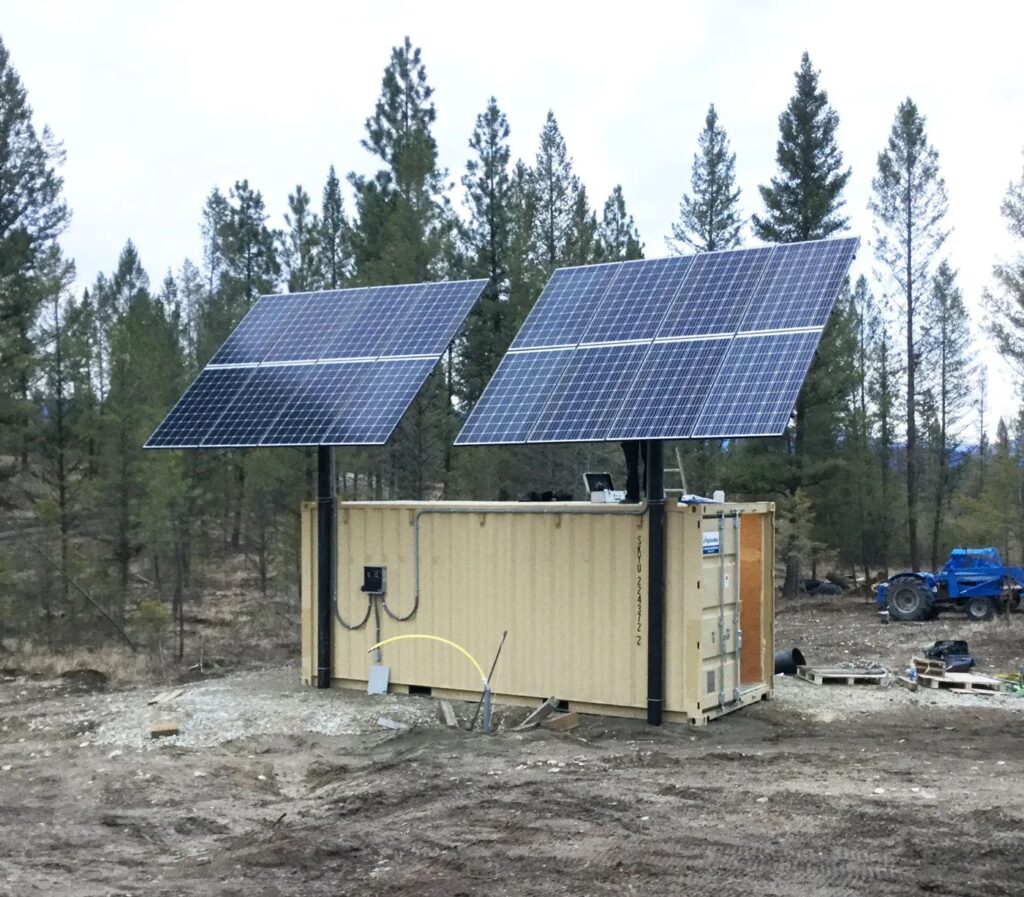Configuring a 3-kilowatt (kW) off-grid solar system requires careful planning and consideration of various components to ensure it meets your energy needs reliably. An off-grid system operates independently of the utility grid, typically with battery storage to store excess energy for use during periods of low sunlight.
1. Assess Your Energy Needs:
- Determine your daily and monthly energy consumption in kilowatt-hours (kWh). Consider your electrical appliances, lighting, and other loads you want to power with the solar system. You’ll need enough solar panels and battery capacity to meet these needs.
2. Solar Panel Selection:
- Choose solar panels with a total capacity of 3kW or slightly more to match your energy needs. The actual number of panels required will depend on the wattage of the panels you select.
3. Inverter Selection:
- Select an inverter that can handle the total capacity of your solar panels. In off-grid systems, inverters often include charge controllers to manage battery charging.
4. Battery Bank Sizing:
- Determine the size of your battery bank to store excess energy for use when the sun isn’t shining. Battery capacity is typically measured in kilowatt-hours (kWh). Calculate the required capacity based on your daily energy consumption and the number of days of autonomy (usually 2-3 days) you want during cloudy or low-sunlight periods.
5. Charge Controller:
- Choose a charge controller that is compatible with your inverter and batteries. It regulates the charging of the batteries and prevents overcharging or deep discharging.
6. Mounting and Racking System:
- Select the appropriate mounting and racking system to securely install the solar panels on your roof or ground. Ensure that the system is designed to withstand local weather conditions.
7. Location and Orientation:
- Determine the best location and orientation for your solar panels, similar to on-grid systems. Optimal sun exposure is crucial for charging your batteries efficiently.
8. Shading Analysis:
- Assess and mitigate any shading issues that may affect your solar panels’ performance. Shading can significantly impact an off-grid system, as it relies on capturing as much sunlight as possible.
9. Electrical Wiring:
- Plan the electrical wiring for your system, including the connection of solar panels to the charge controller and inverter, as well as the connection to the battery bank and your AC loads (appliances, lighting, etc.).
12. Installation: – Hire a professional solar installer experienced in off-grid systems to assemble and install the solar panels, batteries, inverter, charge controller, and other components. Proper installation is crucial for system safety and performance.
13. Final Inspection and Testing: – Have a final inspection conducted to ensure that your off-grid system complies with all safety and electrical codes. Test the system to ensure it functions correctly and that the batteries are charging and discharging as expected.
14. Maintenance and Monitoring: – Regularly maintain and monitor the system to ensure proper operation. This includes checking battery levels, cleaning solar panels, and performing routine checks on system components.
15. Enjoy Your Off-Grid Lifestyle: – Once your 3kW off-grid solar system is configured and operational, you can enjoy the benefits of energy independence and self-sufficiency in remote or off-grid locations.
Configuring an off-grid solar system can be more complex than grid-tied systems due to the need for battery storage and energy management.


